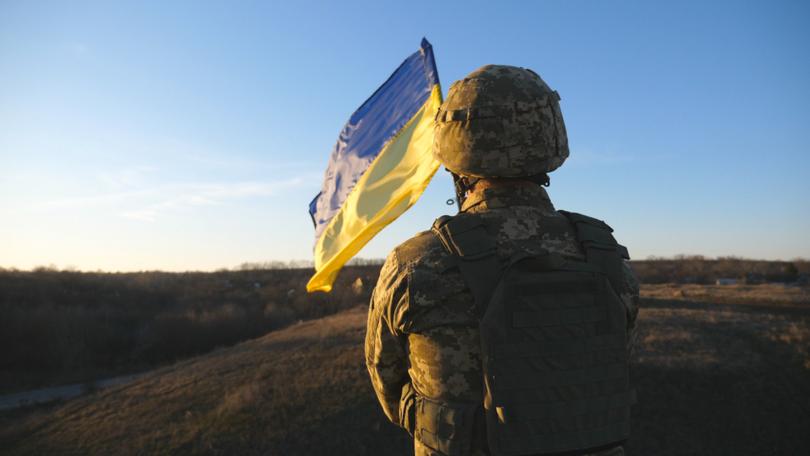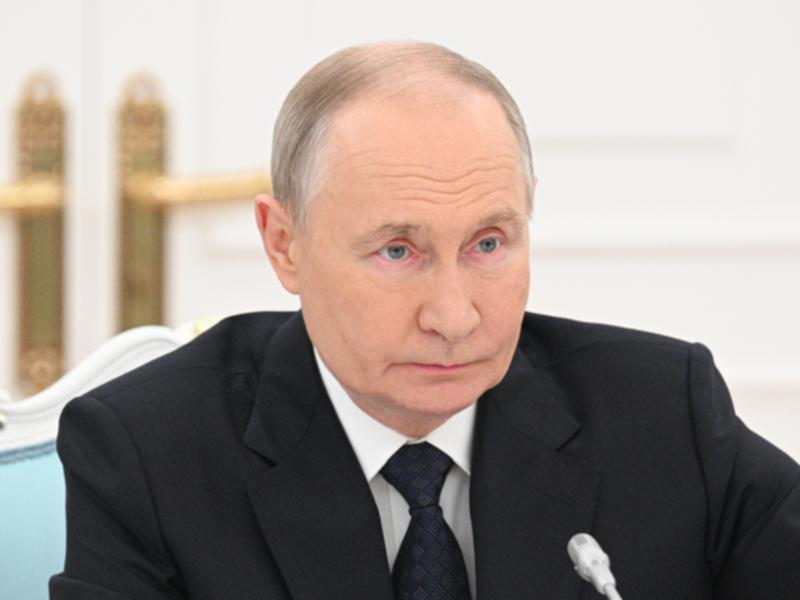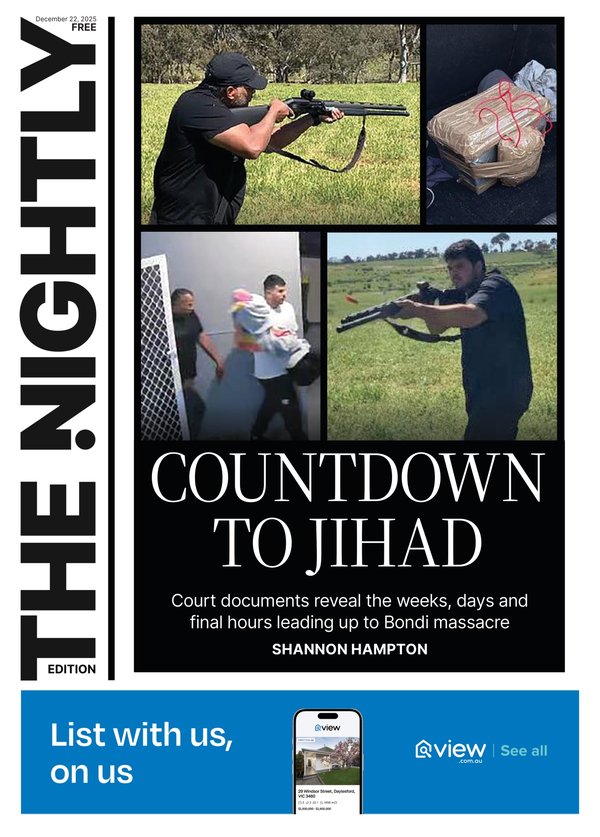THE WASHINGTON POST: What you think you know about Ukraine is probably wrong

Lately, I made a point of reading the posts I normally skip on X, formerly Twitter — the ones that parrot disinformation as if it were well-known fact. Some of these accounts have followings in the hundreds of thousands, including the likes of Elon Musk or the economist Jeffrey Sachs, so you may assume that much of what they write is true.
With President-elect Donald Trump expected to quickly try bringing an end to the war in Ukraine after taking office, I want to address the hoariest myth of all: It’s all the fault of an aggressive West.
According to this narrative, which has gained traction across the global South in particular, Russia is a fellow victim of western colonialism and was moved to invade Ukraine by two outrageous provocations: the North Atlantic Treaty Organization’s hostile eastward expansion and, in 2014, a CIA-engineered coup in Kyiv that threatened the nation’s ethnic Russian minority with “extermination.”
Sign up to The Nightly's newsletters.
Get the first look at the digital newspaper, curated daily stories and breaking headlines delivered to your inbox.
By continuing you agree to our Terms and Privacy Policy.This matters because, if true, all it would take to stop the bloodshed is for the West to close the door to NATO and stop sending Ukraine weapons. If not, those decisions would simply help the Kremlin achieve its goals of territorial conquest, and promise a widening radius for destabilization.
‘Russia is a victim of colonial western powers’
When it comes to colonialism, Russia is as Western as they come. Its history has been one of relentless and remarkably successful imperial expansion, interspersed by brief interludes of military defeat and imperial collapse. That’s how the Soviet Union ended up covering a sixth of the planet’s landmass. It’s how Russia took an area the size of Egypt in the West’s “unequal treaties” with China (the British got Hong Kong).
This creates a genuine problem. Because the Russian and Soviet empires were contiguous — unlike Britain’s, for example — most Russians really aren’t sure where their country should end. Nor is it clear to them why people who speak Russian as a first language can be something other than Russian. If in doubt, please read the lengthy essay President Vladimir Putin wrote on Ukraine in 2021, and then issued to the officers he sent to invade the following year.
What worries the peoples of Georgia, Moldova and Ukraine, as well as the Baltic States and (quietly) Kazakhstan, is that the independence they finally regained in 1991 may prove just another interlude in this expansionist story of Russia. The former possessions that clamored to join the North Atlantic Treaty Organization did so to protect against the backlash from Moscow they feared would eventually come. And come it has.
‘NATO expansion forced Putin to respond’
It’s true that when the Soviet Union was negotiating with Washington over whether a reunified Germany could remain in NATO, verbal assurances were given that this wouldn’t be used to expand the alliance eastward at Moscow’s expense.
These pledges were made to the Soviet Union, not to Russia. Why does the distinction matter? (Moscow is Moscow, after all.) It’s because when borders move by as much as 1,300 kilometers (808 miles), so do reasonable security expectations. And because, when US and European officials were giving these unwritten assurances to former Soviet President Mikhail Gorbachev, there was no independent Estonia, Georgia, Moldova or Ukraine with security concerns of their own. When empires shatter, maps and circumstances change.
The disappearance of the Soviet Union did require new treaties and written agreements to accommodate the emergence of 15 new countries. One was the 1994 Budapest Memorandum, in which France, Russia, the US and UK guaranteed the sovereignty and existing borders of Ukraine (and separately Belarus and Kazakhstan), in exchange for Kyiv giving up its nuclear arsenal.
Another new arrangement was the 1996 Founding Act on Mutual Relations, Cooperation and Security Between NATO and the Russian Federation. In this agreement, NATO pledged — among other things — to integrate its new ex-Soviet bloc members by creating the infrastructure needed for conventional reinforcement in emergency, “rather than by additional permanent stationing of substantial combat forces.” Piling troops forward was understood to be provocative; extending Article 5 protections, without changing NATO force posture, a deterrent measure.
These were the agreed rules of the road between NATO and Russia - not the verbal assurances that were made to Gorbachev, the leader of a different country. NATO stood by its commitments until Russia didn’t. The alliance built no bases on the territories of its new eastern members, until Russia annexed Crimea in 2014, when it rotated small so-called trip wire forces into them. And no, it did not and still has not built military bases in Ukraine. When Kremlin officials bother to offer evidence for that claim, they point to training centers - training centers aren’t military bases; try launching an offensive from one and you’ll find out why.

Yes, there were joint NATO exercises (though on a much smaller scale than Russia’s), and elements of a ballistic missile defense system were placed in Poland and Romania. Yet there was no genuine security threat to Russian territory that could possibly have justified invading a neighbor.
What’s clear is that in 2014 Putin annexed Crimea and began an insurgency in eastern Ukraine. He said at first the unbadged troops and tanks that suddenly appeared on the Crimean peninsula weren’t Russian; this was false. He, and Russian TV, said ethnic Russians were being attacked and that trains full of armed fascists from western Ukraine were on their way. This too was false. I was there. The only thugs were Russian security officers in long leather coats, as if from central casting, and the only people who got beaten up were Crimean Tatars and kids foolish enough to wave Ukrainian flags.
There were indeed protests against the new, post-Maidan revolution government in Kyiv, across the swathe of land from Odessa to Kharkiv that Putin took to calling “Novorossiya,” or Newrussia. Yet these gatherings were mostly small, at about 1,000-2,000 people. In Donetsk, where I also was present, hundreds were brought in on buses from Russia, as they acknowledged to me while getting back on board. That’s why they’d take over a government building, plant flags and then melt away, leaving the authorities to clean up and replace the flags, until the next weekend. The protests were going nowhere, because although many people in the region - back then - liked Russia, they had no interesting in fighting to join it.
“I was the one who pulled the trigger of this war,” Igor Girkin, the former Russian intelligence officer who helped organize events in Crimea and then moved onto Eastern Ukraine, told the Russian nationalist newspaper Zavtra (Tomorrow) at the time. “If our unit hadn’t crossed the border, everything would have fizzled out — like in Kharkiv, like in Odessa.” Girkin is a Russian citizen and ultra-nationalist, who became the breakaway Donetsk People’s Republic’s first defense minister. His acerbic criticism of Putin’s (in his view feeble) conduct of the 2022 invasion has since landed him in jail.
‘Putin just wants Ukraine to be neutral’
The irony here is that until mid-2014, support for NATO membership in Ukraine was negligible and the alliance itself was no longer interested. Neutrality was written into Ukraine’s constitution, a clause that didn’t get removed until December 2014, a full nine months after Crimea’s annexation and Putin’s manufacture of a frozen conflict in the Donbas.
President Volodymyr Zelenskiy offered to renew that offer of neutrality in peace talks of March-April 2022. There’s been a lot of focus on whether then-UK Prime Minister Boris Johnson talked Ukraine into aborting those negotiations. It’s a distraction.
Putin never just asked for military neutrality. Still redlined in the abandoned draft agreement was a Russian demand to more than halve the size of Ukraine’s armed forces to 85,000 troops, to similarly reduce its fleets of tanks and armored vehicles, and to ban Kyiv from receiving foreign military aid or owning missiles with a range above 40 kilometers. This is the demilitarization Russia continues to demand and would leave Ukraine permanently open to invasion or destabilization. That would amount to capitulation and an end to Ukrainian independence. No leader in Kyiv could accept such a deal and survive.
‘The Maidan revolution was a CIA coup’
No, it wasn’t. US intelligence services are certainly capable of toppling governments, but they can’t pay millions of people to spend months on the street in sub-zero temperatures, braving tear gas, water cannon and finally live sniper bullets. As in Georgia now, ordinary people do have ideas and agency. They will react if you try to take away their dreams, or if they become incensed by elephantine corruption and bloodshed.
Yes, then-US Assistant Secretary of State Victoria Nuland distributed cake on Maidan square. Yes, she talked with the then-US ambassador in Kyiv about her preferred choice to lead an opposition government — I’d be shocked if those conversations didn’t take place.
But neither was evidence of a CIA plot or coup. So next time someone is discussing how Russia needs to be given what it wants in Ukraine, because NATO aggression is the problem; or that if Ukrainians would only promise neutrality and stop repressing their Russian population this would all go away, please bear in mind what actually happened.
----
This column does not necessarily reflect the opinion of the editorial board or Bloomberg LP and its owners.
Marc Champion is a Bloomberg Opinion columnist covering Europe, Russia and the Middle East. He was previously Istanbul bureau chief for the Wall Street Journal.
More stories like this are available on bloomberg.com/opinion
©2024 Bloomberg L.P.
Bloomberg Opinion
